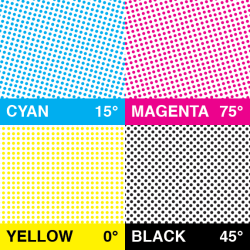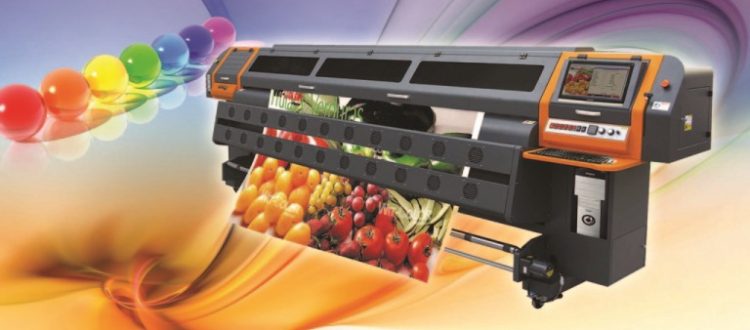The process, inks, and fabrics used in dye sublimation printing.
Question: How does sublimation printing work?
“Traditional” dye sublimation printing of cloth/fabric uses a print process that employs heat to transfer ink – or dye – onto synthetic fabrics or other materials.
Sublimation simply means that the dyes convert from a solid state to a gaseous state, although never becoming liquid. The process was developed to be able to transfer photographs and highly intricate designs onto fabric or cloth.
In our business, we print banners and fabric using dye sublimation mainly for banners or displays. The dye sublimation that we use uses heat and pressure to transfer designs to polyester fabrics mainly.
The Printer Ink Set
 Most dye sublimation printers use CMYO printing colors (Cyan-Magenta-Yellow-Overcoating) which is different from inkjet banner printing (on vinyl or fabric) which uses CMYK (cyan-magenta-yellow-black) because the black is eliminated and the clear overcoat is used instead.
Most dye sublimation printers use CMYO printing colors (Cyan-Magenta-Yellow-Overcoating) which is different from inkjet banner printing (on vinyl or fabric) which uses CMYK (cyan-magenta-yellow-black) because the black is eliminated and the clear overcoat is used instead.
This overprint is both a UV protectant and helps to create a water-resistant coating for polyester banners and displays, t-shirts, table covers, sportswear, flags, and other items that require high definition printing.
Heat Transfer Paper and Sublimation Process
Traditional dye sub printing utilizes a transfer paper which is printed with the CMYO inks in reverse, then, using a heated pressure roller at around 375F, “marries” the paper to the polyester fabric, and converts the dye to gas, and transfers the image onto the banner or other cloth.
Post Printing Process
After printing, this fabric can be washed without damaging the quality of the printing. Other advantages of dye sublimation fabric banner and display printing is that the images don’t peel or fade (permanency), the colors can be brilliant due to the amalgamation of the dye to the fibers of the polyester or other synthetic fabric.
Another major advantage of dye sub printing is that the colors can be brilliant due to the continuous tones that make the printing appear photographic. These images also can be printed all the way to the edges of the fabric.
Printing a dye sub banner is slower than other printing methods, which is why the cost can be higher for fabric banners. It is also more difficult if the material creases as it leaves blank spots.
Where to Use Dye Sublimated Printed Displays
Uses for dye sublimation printed graphics are varied, but one of the most popular uses for these fabric displays is as trade show graphics. This may include, but not be limited to, table top displays, pop up displays, roll up or pop up banner stands, flat panel displays, hanging banner displays, or a multitude of other types of displays utilizing printed cloth/fabric.
If you are budgeting for your trade show display, locate and contact a competent dye sub fabric printer, provide detailed measurements if needed, and the graphics you wish printed. Most printers will provide a small prototype of your printed banner if they are reputable. This will give you the peace of mind needed to proceed with your project, knowing you’ll get exactly what you ordered.
Major Advantage of Dye Sublimated Fabric Banners
Note that if you use fabric banners or graphics for your booth, you will be separating yourself from the competition who may be using cheaper graphics, thus making themselves look cheap. No one wants a cheap company – just a cheap price with great services or products. Good luck!
You can view here for trade show displays that can be printed through dye sublimation.
Popular Posts:




